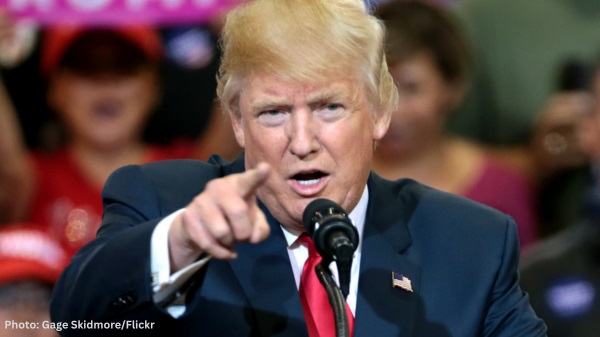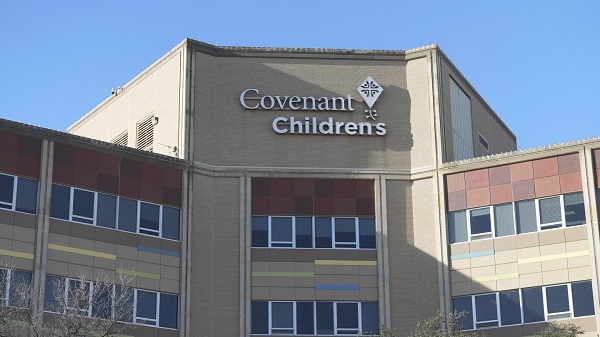Brownstone Institute
If Trump Wins

From the Brownstone Institute
By
How will he organize the “deportation” of illegal migrants? In the best case, it will be difficult. There will be scuffles and chases. Critics will charge the new Administration as cruel and worse. How much stomach will Republicans have for a messy process?
Trump enjoys the momentum. Four of the most recent major national polls show him up 2 to 3%, while Democratic-friendly outlets like the New York Times and CNN both show a TIE race in their final surveys. The 2016 and 2020 elections were razor close even though Clinton (5%) and Biden (8%) had solid polling leads at this point. We need to contemplate a Trump win not only in the electoral college but also in the popular vote.

Here are some thoughts:
- JD Vance ascendant, obviously. Big implications for the Republican trajectory.
- Will Trump replace Fed chairman Jay Powell? Or merely jawbone for a change in policy? In a new CNBC interview, former Fed governor Kevin Warsh argues that the Fed has juiced both the stock market and inflation. Would reducing inflation, which Trump has promised, automatically therefore lead to a stock market correction and economic slowdown? Not necessarily. If Trump unleashes productive economic activity and Congress ends the fiscal blowout, the Fed could normalize monetary policy without causing a major economic slump.
- Will Trump impose the broad and deep tariffs he proposed? Or will he mostly threaten them as a bargaining tool with China? I’m betting on some of the former but more of the latter. We notice, however, Trump allies are floating a trial balloon to replace income taxes with tariffs. As impractical and improbable as that may be, we’re glad to see the mention of radical tax reform reemerge after too long an absence from the national discussion.
- How will he organize the “deportation” of illegal migrants? In the best case, it will be difficult. There will be scuffles and chases. Critics will charge the new Administration as cruel and worse. How much stomach will Republicans have for a messy process? One idea would be to offer a “reverse amnesty” – if you leave peacefully and agree not to return illegally, we will forgive your previous illegal entry(s) and minor violations. This would incentivize self-identification and quiet departure. Plus it would help authorities track those leaving. Would migrant departures truly hit the economy, as critics charge? We doubt large effects. Substantial native populations are still underemployed or absent from the workforce.
- We should expect a major retrenchment of regulatory intrusions across the economy – from energy to crypto. Combined with recent Supreme Court action, such as the Chevron reversal, and assisted by the Elon Musk’s substance and narrative, it could be a regulatory renaissance. Extension of the 2017 tax cuts also becomes far more likely.
- Trump has never worried much about debt, deficits, or spending. But he’s tapped Elon Musk as government efficiency czar. It’s an orthogonal approach to spending reform instead of the traditional (and unsuccessful) Paul Ryan playbook. Can this good cop-bad cop duo at the very least return out-of-control outlays to a pre-Covid path? Can they at least cancel purely kleptocratic programs, such as the $370-billion Green Energy slush funds? Might they go even further – leveraging the unpopular spending explosion and resulting inflation to achieve more revolutionary effects on government spending and reach? Or will the powerful and perennial forces of government expansion win yet again, sustaining a one-way ratchet not even Elon can defeat?
- What if the economy turns south? One catalyst might be the gigantic unrealized bond losses on bank balance sheets; another might be commercial real estate collapse. Although reported GDP growth has been okay, the inflation hangover is helping Trump win on the economy. But many believe the post-pandemic economic expansion is merely a sugar-high and has already lasted longer than expected. A downturn early in Trump’s term could complicate many of his plans.
- How will NATO and its transatlantic network respond? Or more generally, what will the neocon and neoliberal hawks, concentrated in DC and the media, but little loved otherwise, do? Does this item from Anne Applebaum — arguing Trump resembles Hitler, Mussolini, and Stalin all rolled into one — portend continued all-out war on prudent foreign policy? Or will they adopt a more sophisticated approach? If the neocons move wholesale and formally (back) into the Democratic fold, how long will the coalition of wokes and militarists hold? On the economic front, Europe, already underperforming vis-a-vis the US, will fall even further behind without big changes. Reformers should gain at the expense of the transatlantic WEF-style bureaucrats.
- Can Trump avoid another internal sabotage of his Administration? Before then, if the election results are tight, will the Democrats seek to complicate or even block his inauguration? Can he win approval for his appointees in the Senate? Can he clean house across the vast public agencies? How long will it take to recruit, train, and reinvigorate talented military leadership, which we chased away in recent years? And how will Trump counter – and avoid overreacting to – taunts, riots, unrest, and lawfare, designed to bolster the case he’s an authoritarian?
- Will the Democrats reorient toward the center, a la Bill Clinton? Or will the blinding hatred of Trump fuel yet more radicalism? Orthodox political thinking suggests a moderation. Especially if Trump wins the popular vote, or comes close, pragmatic Democrats will counsel a reformation. James Carville, for example, already complains that his party careened recklessly away from male voters. And Trump’s apparent pickups among Black and Latino voters complicate the Democrats’ longstanding identity-focused strategy. Other incentives might push toward continued belligerence and extreme wokeness, however, and thus an intra-party war.
- Will the half of the country which inexplicably retains any confidence in the legacy media at least begin rethinking its information diet and filters? Or has the infowarp inflicted permanent damage?
- Will big business, which shifted hard toward Democrats over the last 15 years, recalibrate toward the GOP? Parts of Silicon Valley over the last year began a reorientation — e.g. Elon Musk, Marc Andreessen, David Sacks, and before them, Peter Thiel in 2016. But those are the entrepreneurs. In the receding past, businesses large and small generally lined up against government overreach. Then Big Business and Big Government merged. Now, a chief divide is between politically-enmeshed bureaucratic businesses and entrepreneurial ones. Does the GOP even want many of the big guys back? The GOP’s new alignment with “Little Tech” is an exciting development, especially after being shut out of Silicon Valley for the last two decades.
- Industry winners: traditional energy, nuclear energy, Little Tech. Industry losers: Green Energy, Big Tech, Big Pharma, Big Food. Individual winners: X (nee Twitter), Elon Musk, RFK, Jr.
- How will the Censorship Industrial Complex react? A Trump win will pose both a symbolic and operational blow to governmental, non-governmental, old media, and new media outlets determined to craft and control facts and narratives. It will complicate their mission, funding, and organizational web. Will they persist in their “mis/disinformation” framing and their badgering of old media and social media companies to moderate content aggressively? Or will they devise a new strategy? A.I. is pretty clearly the next frontier in the information wars. How will those who propagandize and rewire human minds attempt to program and prewire artificial ones?
- How will Trump integrate RFK, Jr. and his movement? Will RFK, Jr. achieve real influence, especially on health issues? Big Pharma and Big Public Health will wage a holy war to block reforms in general and accountability for Covid mistakes in particular.
- Trump has promised to end the war between Russia and Ukraine. On one hand, it should be easy. Despite what you hear from DC media and think tanks, Ukraine is losing badly. Hundreds of thousands are dead, and its military is depleted and faltering. Ukraine should want a deal quickly, before it loses yet more people and territory. Russia, meanwhile, always said it wants a deal, even before the war started, focusing on Ukrainian neutrality. Why Ukrainian neutrality should bother the US was always a mystery. And yet even critics of the West’s support for Ukraine, who want an agreement, think it will be difficult to achieve. The Western foreign policy establishment has invested too much credibility and emotion. It will charge “appeasement” and “betrayal” and make any deal difficult for Trump. Russia, meanwhile, has secured so much territory and now has Odessa and Kharkiv in its sights. Putin will not be eager to accept a deal he would have taken in 2021 or before. The far better path for all involved was a pre-war agreement, or the one negotiated but scuttled in April 2022.
- What if A.I. launches a new productivity boom, enabled by an agenda of energy abundance, including a nuclear power revival? The economic tailwinds could remake politics even more than we currently see.
- Can Trump, having run and won his last campaign, consolidate gains by reaching out and uniting the portions of the country willing to take an extended hand?
Republished from the author’s Substack
Brownstone Institute
If the President in the White House can’t make changes, who’s in charge?

From the Brownstone Institute
By
Who Controls the Administrative State?
President Trump on March 20, 2025, ordered the following: “The Secretary of Education shall, to the maximum extent appropriate and permitted by law, take all necessary steps to facilitate the closure of the Department of Education.”
That is interesting language: to “take all necessary steps to facilitate the closure” is not the same as closing it. And what is “permitted by law” is precisely what is in dispute.
It is meant to feel like abolition, and the media reported it as such, but it is not even close. This is not Trump’s fault. The supposed authoritarian has his hands tied in many directions, even over agencies he supposedly controls, the actions of which he must ultimately bear responsibility.
The Department of Education is an executive agency, created by Congress in 1979. Trump wants it gone forever. So do his voters. Can he do that? No but can he destaff the place and scatter its functions? No one knows for sure. Who decides? Presumably the highest court, eventually.
How this is decided – whether the president is actually in charge or really just a symbolic figure like the King of Sweden – affects not just this one destructive agency but hundreds more. Indeed, the fate of the whole of freedom and functioning of constitutional republics may depend on the answer.
All burning questions of politics today turn on who or what is in charge of the administrative state. No one knows the answer and this is for a reason. The main functioning of the modern state falls to a beast that does not exist in the Constitution.
The public mind has never had great love for bureaucracies. Consistent with Max Weber’s worry, they have put society in an impenetrable “iron cage” built of bloodless rationalism, needling edicts, corporatist corruption, and never-ending empire-building checked by neither budgetary restraint nor plebiscite.
Today’s full consciousness of the authority and ubiquity of the administrative state is rather new. The term itself is a mouthful and doesn’t come close to describing the breadth and depth of the problem, including its root systems and retail branches. The new awareness is that neither the people nor their elected representatives are really in charge of the regime under which we live, which betrays the whole political promise of the Enlightenment.
This dawning awareness is probably 100 years late. The machinery of what is popularly known as the “deep state” – I’ve argued there are deep, middle, and shallow layers – has been growing in the US since the inception of the civil service in 1883 and thoroughly entrenched over two world wars and countless crises at home and abroad.
The edifice of compulsion and control is indescribably huge. No one can agree precisely on how many agencies there are or how many people work for them, much less how many institutions and individuals work on contract for them, either directly or indirectly. And that is just the public face; the subterranean branch is far more elusive.
The revolt against them all came with the Covid controls, when everyone was surrounded on all sides by forces outside our purview and about which the politicians knew not much at all. Then those same institutional forces appear to be involved in overturning the rule of a very popular politician whom they tried to stop from gaining a second term.
The combination of this series of outrages – what Jefferson in his Declaration called “a long train of abuses and usurpations, pursuing invariably the same Object” – has led to a torrent of awareness. This has translated into political action.
A distinguishing mark of Trump’s second term has been an optically concerted effort, at least initially, to take control of and then curb administrative state power, more so than any executive in living memory. At every step in these efforts, there has been some barrier, even many on all sides.
There are at least 100 legal challenges making their way through courts. District judges are striking down Trump’s ability to fire workers, redirect funding, curb responsibilities, and otherwise change the way they do business.
Even the signature early achievement of DOGE – the shuttering of USAID – has been stopped by a judge with an attempt to reverse it. A judge has even dared tell the Trump administration who it can and cannot hire at USAID.
Not a day goes by when the New York Times does not manufacture some maudlin defense of the put-upon minions of the tax-funded managerial class. In this worldview, the agencies are always right, whereas any elected or appointed person seeking to rein them in or terminate them is attacking the public interest.
After all, as it turns out, legacy media and the administrative state have worked together for at least a century to cobble together what was conventionally called “the news.” Where would the NYT or the whole legacy media otherwise be?
So ferocious has been the pushback against even the paltry successes and often cosmetic reforms of MAGA/MAHA/DOGE that vigilantes have engaged in terrorism against Teslas and their owners. Not even returning astronauts from being “lost in space” has redeemed Elon Musk from the wrath of the ruling class. Hating him and his companies is the “new thing” for NPCs, on a long list that began with masks, shots, supporting Ukraine, and surgical rights for gender dysphoria.
What is really at stake, more so than any issue in American life (and this applies to states around the world) – far more than any ideological battles over left and right, red and blue, or race and class – is the status, power, and security of the administrative state itself and all its works.
We claim to support democracy yet all the while, empires of command-and-control have arisen among us. The victims have only one mechanism available to fight back: the vote. Can that work? We do not yet know. This question will likely be decided by the highest court.
All of which is awkward. It is impossible to get around this US government organizational chart. All but a handful of agencies live under the category of the executive branch. Article 2, Section 1, says: “The executive Power shall be vested in a President of the United States of America.”

Does the president control the whole of the executive branch in a meaningful way? One would think so. It’s impossible to understand how it could be otherwise. The chief executive is…the chief executive. He is held responsible for what these agencies do – we certainly blasted away at the Trump administration in the first term for everything that happened under his watch. In that case, and if the buck really does stop at the Oval Office desk, the president must have some modicum of control beyond the ability to tag a marionette to get the best parking spot at the agency.
What is the alternative to presidential oversight and management of the agencies listed in this branch of government? They run themselves? That claim means nothing in practice.
For an agency to be deemed “independent” turns out to mean codependency with the industries regulated, subsidized, penalized, or otherwise impacted by its operations. HUD does housing development, FDA does pharmaceuticals, DOA does farming, DOL does unions, DOE does oil and turbines, DOD does tanks and bombs, FAA does airlines, and so on It goes forever.
That’s what “independence” means in practice: total acquiescence to industrial cartels, trade groups, and behind-the-scenes systems of payola, blackmail, and graft, while the powerless among the people live with the results. This much we have learned and cannot unlearn.
That is precisely the problem that cries out for a solution. The solution of elections seems reasonable only if the people we elected actually have the authority over the thing they seek to reform.
There are criticisms of the idea of executive control of executive agencies, which is really nothing other than the system the Founders established.
First, conceding more power to the president raises fears that he will behave like a dictator, a fear that is legitimate. Partisan supporters of Trump won’t be happy when the precedent is cited to reverse Trump’s political priorities and the agencies turn on red-state voters in revenge.
That problem is solved by dismantling agency power itself, which, interestingly, is mostly what Trump’s executive orders have sought to achieve and which the courts and media have worked to stop.
Second, one worries about the return of the “spoils system,” the supposedly corrupt system by which the president hands out favors to friends in the form of emoluments, a practice the establishment of the civil service was supposed to stop.
In reality, the new system of the early 20th century fixed nothing but only added another layer, a permanent ruling class to participate more fully in a new type of spoils system that operated now under the cloak of science and efficiency.
Honestly, can we really compare the petty thievery of Tammany Hall to the global depredations of USAID?
Third, it is said that presidential control of agencies threatens to erode checks and balances. The obvious response is the organizational chart above. That happened long ago as Congress created and funded agency after agency from the Wilson to the Biden administration, all under executive control.
Congress perhaps wanted the administrative state to be an unannounced and unaccountable fourth branch, but nothing in the founding documents created or imagined such a thing.
If you are worried about being dominated and destroyed by a ravenous beast, the best approach is not to adopt one, feed it to adulthood, train it to attack and eat people, and then unleash it.
The Covid years taught us to fear the power of the agencies and those who control them not just nationally but globally. The question now is two-fold: what can be done about it and how to get from here to there?
Trump’s executive order on the Department of Education illustrates the point precisely. His administration is so uncertain of what it does and can control, even of agencies that are wholly executive agencies, listed clearly under the heading of executive agencies, that it has to dodge and weave practical and legal barriers and land mines, even in its own supposed executive pronouncements, even to urge what might amount to be minor reforms.
Whoever is in charge of such a system, it is clearly not the people.
Brownstone Institute
The New Enthusiasm for Slaughter

From the Brownstone Institute
By
What War Means
My mother once told me how my father still woke up screaming in the night years after I was born, decades after the Second World War (WWII) ended. I had not known – probably like most children of those who fought. For him, it was visions of his friends going down in burning aircraft – other bombers of his squadron off north Australia – and to be helpless, watching, as they burnt and fell. Few born after that war could really appreciate what their fathers, and mothers, went through.
Early in the movie Saving Private Ryan, there is an extended D-Day scene of the front doors of the landing craft opening on the Normandy beaches, and all those inside being torn apart by bullets. It happens to one landing craft after another. Bankers, teachers, students, and farmers being ripped in pieces and their guts spilling out whilst they, still alive, call for help that cannot come. That is what happens when a machine gun opens up through the open door of a landing craft, or an armored personnel carrier, of a group sent to secure a tree line.
It is what a lot of politicians are calling for now.
People with shares in the arms industry become a little richer every time one of those shells is fired and has to be replaced. They gain financially, and often politically, from bodies being ripped open. This is what we call war. It is increasingly popular as a political strategy, though generally for others and the children of others.
Of course, the effects of war go beyond the dismembering and lonely death of many of those fighting. Massacres of civilians and rape of women can become common, as brutality enables humans to be seen as unwanted objects. If all this sounds abstract, apply it to your loved ones and think what that would mean.
I believe there can be just wars, and this is not a discussion about the evil of war, or who is right or wrong in current wars. Just a recognition that war is something worth avoiding, despite its apparent popularity amongst many leaders and our media.
The EU Reverses Its Focus
When the Brexit vote determined that Britain would leave the European Union (EU), I, like many, despaired. We should learn from history, and the EU’s existence had coincided with the longest period of peace between Western European States in well over 2,000 years.
Leaving the EU seemed to be risking this success. Surely, it is better to work together, to talk and cooperate with old enemies, in a constructive way? The media, and the political left, center, and much of the right seemed at that time, all of nine years ago, to agree. Or so the story went.
We now face a new reality as the EU leadership scrambles to justify continuing a war. Not only continuing, but they had been staunchly refusing to even countenance discussion on ending the killing. It has taken a new regime from across the ocean, a subject of European mockery, to do that.
In Europe, and in parts of American politics, something is going on that is very different from the question of whether current wars are just or unjust. It is an apparent belief that advocacy for continued war is virtuous. Talking to leaders of an opposing country in a war that is killing Europeans by the tens of thousands has been seen as traitorous. Those proposing to view the issues from both sides are somehow “far right.”
The EU, once intended as an instrument to end war, now has a European rearmament strategy. The irony seems lost on both its leaders and its media. Arguments such as “peace through strength” are pathetic when accompanied by censorship, propaganda, and a refusal to talk.
As US Vice-President JD Vance recently asked European leaders, what values are they actually defending?
Europe’s Need for Outside Help
A lack of experience of war does not seem sufficient to explain the current enthusiasm to continue them. Architects of WWII in Europe had certainly experienced the carnage of the First World War. Apart from the financial incentives that human slaughter can bring, there are also political ideologies that enable the mass death of others to be turned into an abstract and even positive idea.
Those dying must be seen to be from a different class, of different intelligence, or otherwise justifiable fodder to feed the cause of the Rules-Based Order or whatever other slogan can distinguish an ‘us’ from a ‘them’…While the current incarnation seems more of a class thing than a geographical or nationalistic one, European history is ripe with variations of both.
Europe appears to be back where it used to be, the aristocracy burning the serfs when not visiting each other’s clubs. Shallow thinking has the day, and the media have adapted themselves accordingly. Democracy means ensuring that only the right people get into power.
Dismembered European corpses and terrorized children are just part of maintaining this ideological purity. War is acceptable once more. Let’s hope such leaders and ideologies can be sidelined by those beyond Europe who are willing to give peace a chance.
There is no virtue in the promotion of mass death. Europe, with its leadership, will benefit from outside help and basic education. It would benefit even further from leadership that values the lives of its people.
-

 2025 Federal Election2 days ago
2025 Federal Election2 days agoRCMP Whistleblowers Accuse Members of Mark Carney’s Inner Circle of Security Breaches and Surveillance
-

 Also Interesting2 days ago
Also Interesting2 days agoBetFury Review: Is It the Best Crypto Casino?
-

 Autism2 days ago
Autism2 days agoRFK Jr. Exposes a Chilling New Autism Reality
-

 COVID-192 days ago
COVID-192 days agoCanadian student denied religious exemption for COVID jab takes tech school to court
-

 2025 Federal Election2 days ago
2025 Federal Election2 days agoBureau Exclusive: Chinese Election Interference Network Tied to Senate Breach Investigation
-

 International2 days ago
International2 days agoUK Supreme Court rules ‘woman’ means biological female
-

 2025 Federal Election2 days ago
2025 Federal Election2 days agoNeil Young + Carney / Freedom Bros
-

 Health2 days ago
Health2 days agoWHO member states agree on draft of ‘pandemic treaty’ that could be adopted in May









